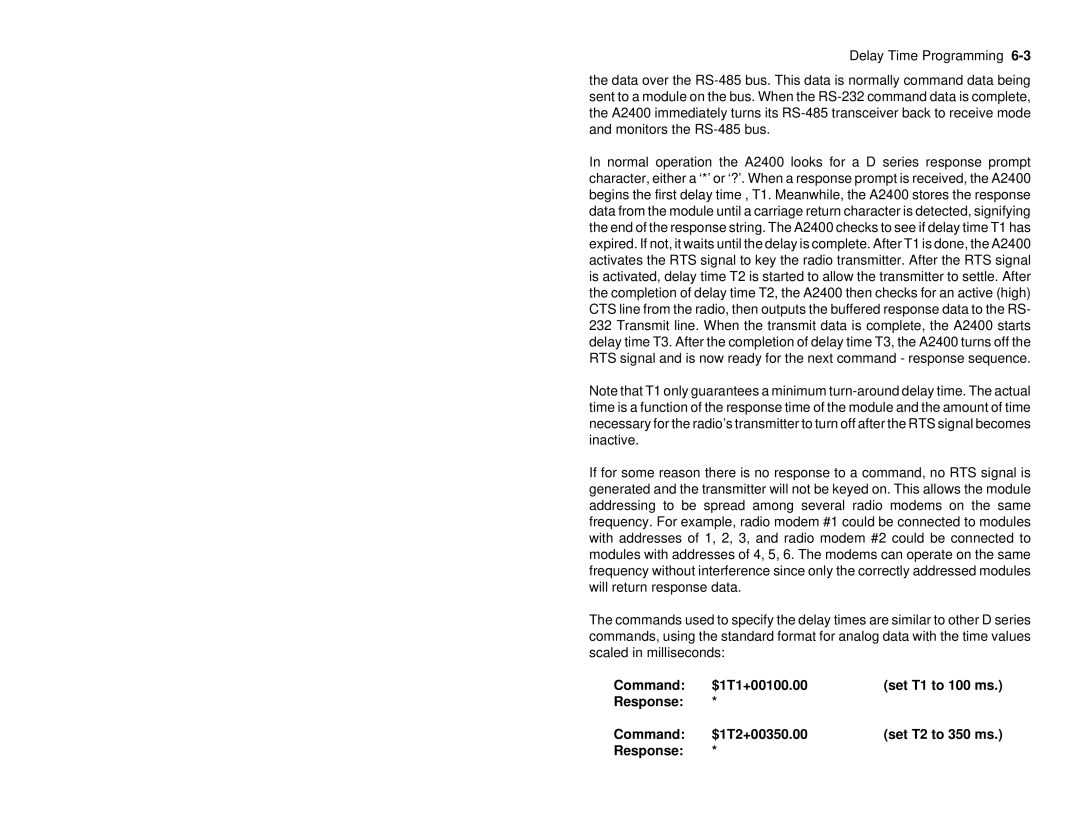Delay Time Programming
the data over the
In normal operation the A2400 looks for a D series response prompt character, either a ‘*’ or ‘?’. When a response prompt is received, the A2400 begins the first delay time , T1. Meanwhile, the A2400 stores the response data from the module until a carriage return character is detected, signifying the end of the response string. The A2400 checks to see if delay time T1 has expired. If not, it waits until the delay is complete. After T1 is done, the A2400 activates the RTS signal to key the radio transmitter. After the RTS signal is activated, delay time T2 is started to allow the transmitter to settle. After the completion of delay time T2, the A2400 then checks for an active (high) CTS line from the radio, then outputs the buffered response data to the RS- 232 Transmit line. When the transmit data is complete, the A2400 starts delay time T3. After the completion of delay time T3, the A2400 turns off the RTS signal and is now ready for the next command - response sequence.
Note that T1 only guarantees a minimum
If for some reason there is no response to a command, no RTS signal is generated and the transmitter will not be keyed on. This allows the module addressing to be spread among several radio modems on the same frequency. For example, radio modem #1 could be connected to modules with addresses of 1, 2, 3, and radio modem #2 could be connected to modules with addresses of 4, 5, 6. The modems can operate on the same frequency without interference since only the correctly addressed modules will return response data.
The commands used to specify the delay times are similar to other D series commands, using the standard format for analog data with the time values scaled in milliseconds:
Command: | $1T1+00100.00 | (set T1 to 100 ms.) |
Response: | * |
|
Command: | $1T2+00350.00 | (set T2 to 350 ms.) |
Response: | * |
|
